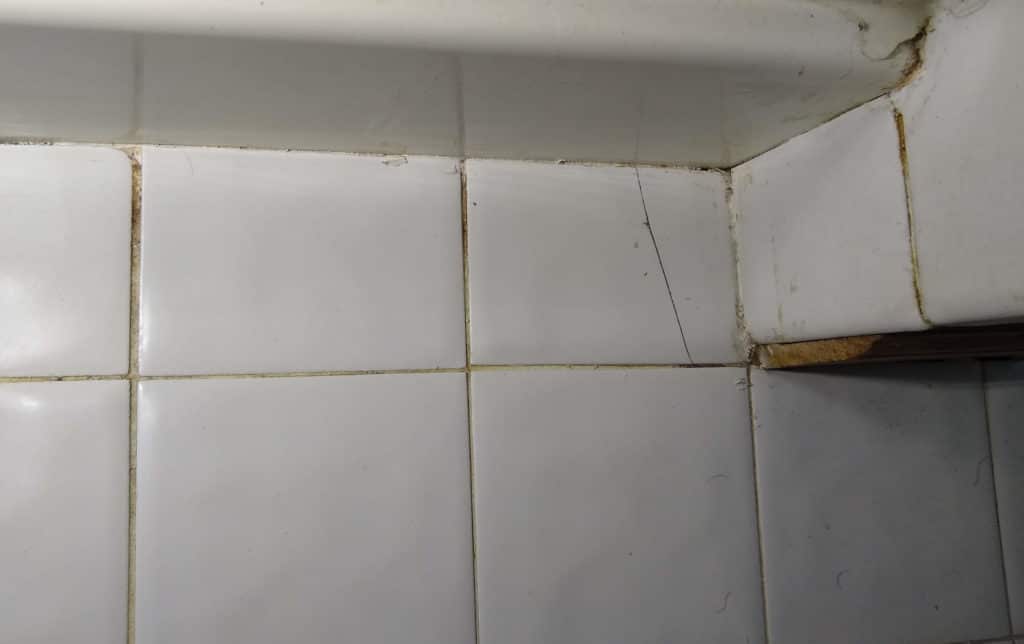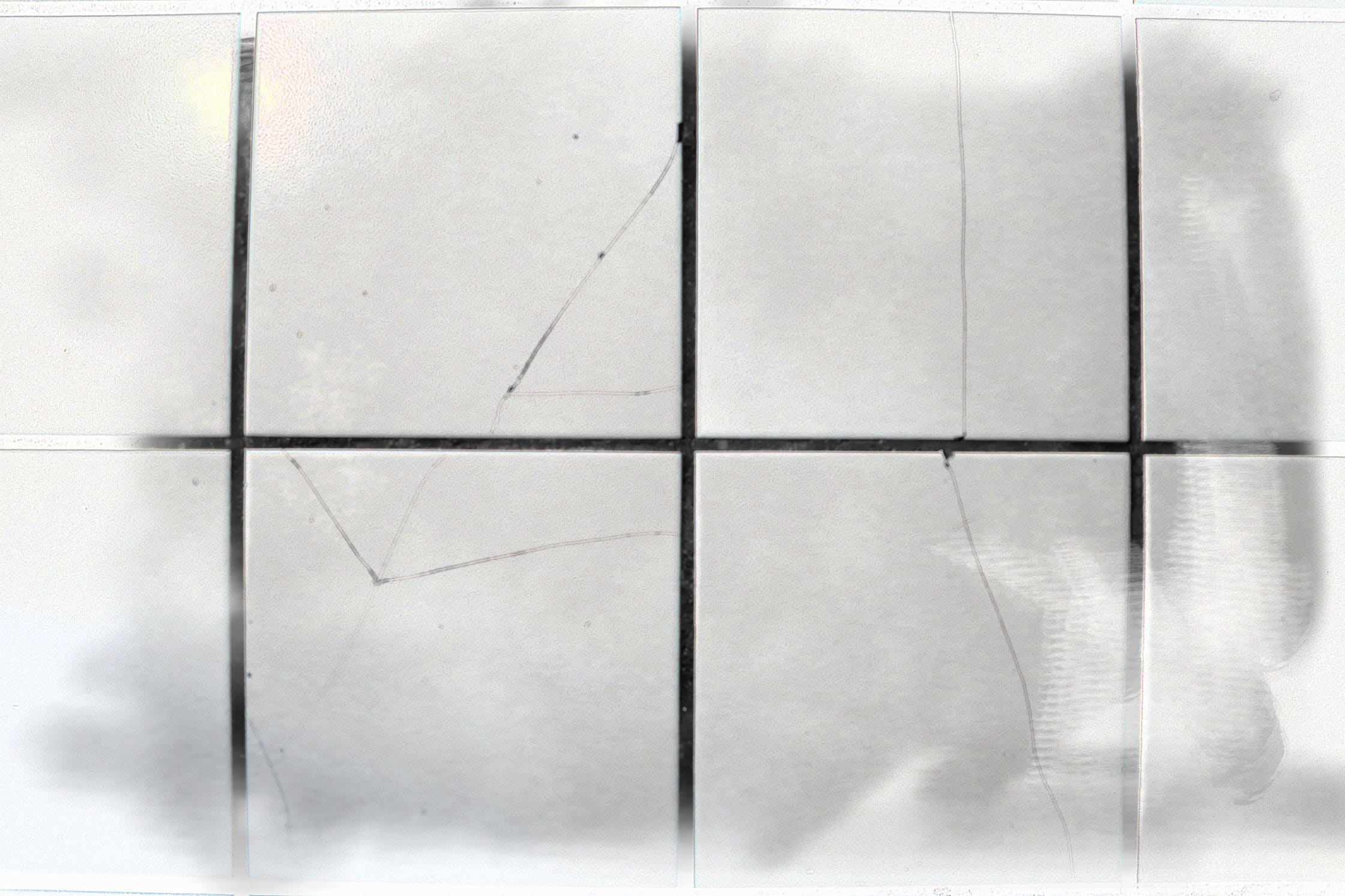It’s so frustrating – whether it’s new tile or old: unsightly cracks. For all the talk of durability of tile, how can this happen? Let’s explore some reasons that tile can crack, which unfortunately can result in costly repairs.
Overview
Estimated reading time: 7 minutes
What causes Tiles to Crack?
There are only two basic things that really cause damage to tiles – building movement and forceful impact. Every good tile installation will plan for and address expected movement and exhibit some amount of impact resistance. Depending on the type of movement, the patterns of damage don’t look the same, however. With a little sleuthing, you may be able to figure out the exact cause of your tile cracks.
Installation Mistakes and Practices
What we have found in our work with tile is that cracks are often the result of a poor installation, whether through carelessness of the installer or a lack of understanding about the nature of a tiled surface. Installers experienced in the other trades can sometimes bring with them misconceptions about proper tile installation.
Deficient Mortar Bond
A well-bonded tile is one that has a consistent coat of mortar across the back that not only bonds it to the floor/wall, but supports it as well. There are a few problematic methods that crop up commonly, including spot bonding, troweling too little mortar with too small a trowel, and randomly troweling patterns. Spot bonding and similar mortar application techniques result in the tile being unsupported. The tile itself is rather brittle without having a strong substrate, and the lack of complete bond means the entire tile installation is just as brittle.
The following video shows a number of these problems and why they are problematic.
Misunderstandings about Substrate Preparation
Poorly-Educated Contractors
Setting tile is more than this, however. There are constantly new products, methods, and best practices to keep up with. To stay current, installers must regularly take part in training. We see a lot of newer products being installed improperly as a result of poor understanding. Installers must read datasheets, instructions, and consult with technical representatives to stay current in the industry. Waterproofing systems in particular seem to flummox many a contractor. Newer grouts also have different mixing times, methods, and speeds than those of yesteryear. Tile failures as a result of poor understanding of products are not uncommon in the industry.
Deflection: Up/Down Movement can Cause Tiles to Crack under the Stress
Deflection is a fancy word for the amount of expected up and down movement in a floor. Especially in North America, with wooden-framed floors and walls, the bending under load, or deflection becomes very important. The deflection measurement is a measurement of how much a floor system will bend under a given weight. You’ll see L/360 and L/720 thrown around in the tile world – those are measurements indicating a maximum allowable “bend” of 1-inch over 360-feet (or 720-feet). This deflection measurement is affected by your joist heights, joist widths, the space between joists, and the span (ie, how long the joist is).
If you plan to install ceramic/porcelain tile, your floor system must be build to L/360 or better (keep in mind, the high the L/number, the less the deflection). For any natural stone tile, you’ll need your floor system to be built to L/720 or better. If your current floor is not going to work for the product you’ve chosen, there are ways of increasing its rigidity/strength, but it will be more work to make that happen.
When an experienced tile contractor gives you a bid, you’ll notice they observe the joist structure in your home. Unfortunately, many skip this step and and up with cracked tiles as a result of the floor ‘bouncing’ too much.
If setting over a concrete slab, deflection isn’t usually an issue. In this case, generally proper underlayment and expansion joints as mentioned below are the most important factors in a well-considered tile assembly.
Expansion/Contraction: Movement Side-to-Side cause Cracks by Compressing the Tiles

All floors need room to expand and contract for temperature and humidity changes. Your tile will need a perimeter joint between the outer edge and the wall. Here’s something you probably don’t want to happen:
What you see in the video above is that the floor assembly expanding due to warm temperatures. There wasn’t space allowed along the perimeter of the tile for it to expand, so it compressed together. With all the sideways pressure, they yielded and “tented” upwards.
Regular expansion joints (something similar known in concrete work as “control joints”) plan for this inevitable expansion and contraction. A contractor will install a movement joint every so often to allow for expansion and contraction of the tile assembly. For interiors, these are usually every 25 feet, unless they are exposed to water or sunlight, where that measurement would drop to every 12 feet.
We sometimes find that certain glass tiles can be problematic in showers – glass tends to expand and contract more that other materials from heat of the shower water. It sometimes causes small fractures across an entire wall. There are glass tiles rated for shower wall use, but each type of tile must be verified before installation.
Deficient Underlayment
Underlayment under tile has always been an integral part of a tile assembly. While builders-grade installations have a bad habit of installation tile straight to a subfloor, this can often result in many of the problems mentioned in this article. Unfortunately, getting proper installation of underlayment also seems to be elusive. The purpose of underlayment is to make a surface for tile that is absolutely flat, and able to receive a mortar bond that will make for a strong installation. Cement board, an extra layer of plywood, self-leveling underlayment, and gypsum fiber board are all examples of underlayments for tile. Each one has corresponding installation requirements that must be well-followed for success. More on tile underlayment here.
Forceful Impact
Let’s not forget that tile isn’t bulletproof. Dropping things, especially sharp objects can cause an impact that can gouge or break a tile. The difference is that these usually take the form of chips or defects on the surface of the tile. The mortar should be holding the back of the tile solid, and the damage won’t travel all the way through.
My Tiles have started cracking – what can I do to stop it?
Unfortunately, there’s not much you can do besides keeping heavy objects away from that section of the floor and being generally careful. All of the things causing the tiles to crack are already done, so there’s very little to remedy the situation. If the underlying structure isn’t supporting the tile well enough, the only thing to do is live with it until you’re able to remove the tile and start over. If this is cracked tile in a shower, and you are seeing signs of a leak beneath a shower, there’s a good chance the mortar bed in the shower pan has been compromised. A repair or a rebuild is likely in order.
What if they are only hairline cracks? Am I still in trouble?
Not always – it’s probably best to wait and see. There are a number of tiles with cracked glaze, manufactured deliberately to look that way. If the cracks aren’t traveling or spreading apart, there’s a good chance they will stay that way.
Common Questions about Cracked Tiles
Assuming your tile installation is well-done, there is no risk of damage from underfloor heating. In fact, many tile installation manufacturers carry floor warming lines in their product catalogs.
Again, assuming your tile is installed to industry standards (ANSI and TCNA), there is no risk to your tile. Exterior installations are particularly tricky, and therefore prone to mistakes. Take the time to review your contractor’s qualifications and to understand the installation methods used.
Tiles should almost never crack. A well-built tile floor or wall should last as long as the building it’s in.
While certified porcelain tiles tend to be tougher tiles, they are also brittle until they are installed to industry standards. It’s not the porcelain that makes a long-lasting floor or wall, but the entire tile assembly that works together.
Of course! Call your local tile contractor to give you a quote.

